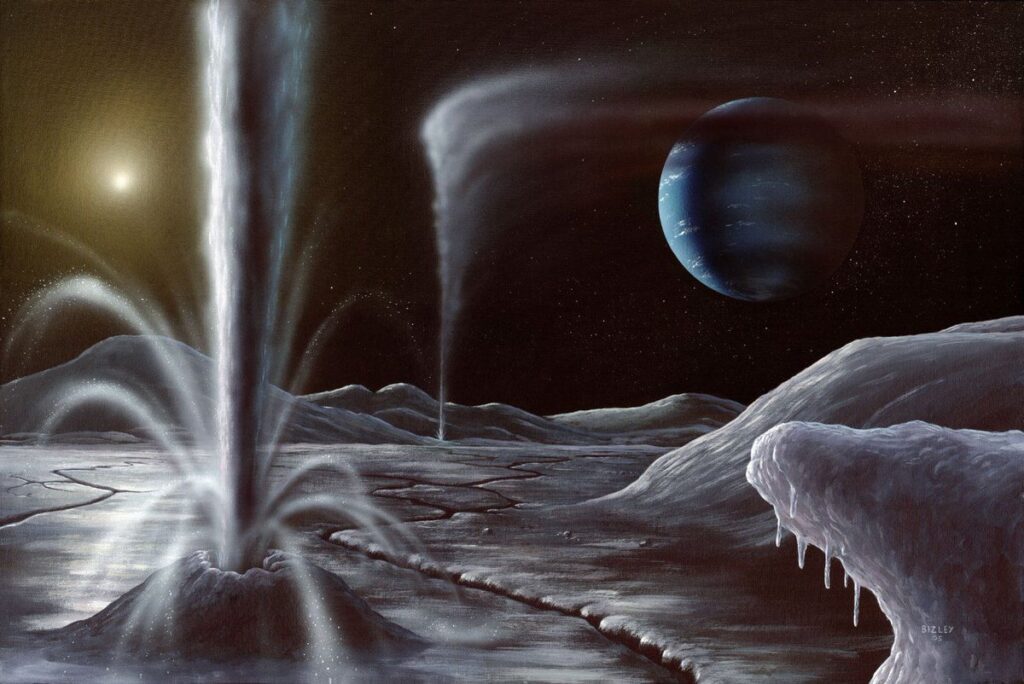December 3, 2021 at 10:30am CST
For access to the recorded talk please contact social@ig.utexas.edu.
Host: Krista Soderlund
Title: Cryovolcanism on Ocean Worlds Near and Far
Abstract: As it is most commonly known, volcanism involves the eruption of hot, molten rock and ash on Earth and other terrestrial planets. However, several bodies in our outer solar system exhibit icy volcanism or, cryovolcanism, during which briny aqueous solutions and crystalline ice erupt instead. The Voyager 2 and Cassini spacecraft imaged geyser-like eruptions in the south polar regions of Neptune’s moon Triton and Saturn’s moon Enceladus, respectively. Imagery from the Galileo spacecraft and recent telescopic detections of putative geyser-like plumes on Jupiter’s moon Europa suggest that cryovolcanic processes may be currently occurring on the smallest Galilean satellite. Ground-based studies and imagery from NASA’s New Horizons and Dawn spacecraft suggest that cryovolcanism may have also occurred on large Kuiper Belt Objects such as Pluto and Charon, and possibly on dwarf planet Ceres. Similar to the icy moons in our outer solar system, cryovolcanic eruptions on cold, water-rich exoplanets (e.g., Trappist-1h) could indicate the presence of internal liquid reservoirs or subsurface oceans. Given the limits of current instrumentation, spectroscopic detection of water and other molecules that are vented into space during cryovolcanic eruptions may be the only way to infer the presence of internal liquid reservoirs or subsurface oceans on water-rich exoplanets that lie beyond the snowlines of their respective planetary systems.
In this talk I will review the current state of knowledge of cryovolcanism in our solar system and will present models that shed light on the formation of cryovolcanic domes at Europa’s surface. Because cryomagma migration may create habitable niches on icy worlds by facilitating the cycling of organic material between internal fluid reservoirs and the surface, I will also discuss the orbital and thermal conditions that could facilitate cryovolcanism on extrasolar planets, and prospects for utilizing next-generation space telescopes to detect cryovolcanic eruptions on distant, water-rich worlds. Lastly, I will review the goals of NASA’s Europa Clipper Mission, which will make new discoveries at our solar system’s own active ocean world.


